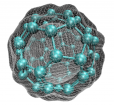
Services - Emu
Sample environments and Data analysis

Showing 221 - 240 of 982 results

Sample environments and Data analysis

Dr David Boardman is the Chief Technology Officer & Principal Scientist for Detection & Imaging.
Two ANSTO environmental scientists are part of a large team led by the Australian National University (ANU), who have received an Australian Research Council Discovery Project grant to investigate how environmental change and human activities since industrialisation have impacted the transport and deposition of toxic metals on the south coast of Australia, Tasmania, and remote Southern Ocean islands.
Fish farming is increasing globally to provide an affordable source of protein and income security for local communities. Joshua's research project aims to optimise production of tilapia to enhance food and nutritional security in PNG.


Scientists ensure their measurements are accurate and precise by regularly calibrating their instruments. In this data set, students manipulate and graph calibration data from Taipan, one of ANSTO's neutron scattering instruments. Students must determine whether Taipan is functioning within the acceptable limits of error for the scientists' experiments.

Pip is a passionate creative who is obsessed with applying design thinking to any and every project she can get her hands on, no matter the topic.
Australia is leading an agriculture project in the Asia and Pacific region, in partnership with the International Atomic Energy Agency (IAEA) and the Regional Cooperative Agreement for Research, Development and Training Related to Nuclear Science and Technology for Asia and the Pacific (RCA) to progress Atoms4Food.
Connect with the businesses and organisations seeking better understanding decommissioning oil and gas infrastructure and the potential impact of contaminants on marine life.

ANSTO Analytical Facility conducts a range of analyses required to support our commercial projects, and can analyse everything from simple samples to complex matrices not typically dealt with by standard commercial laboratories.
A study has provided insight into copper sulfate pentahydrate and could give clues to how other hydrated minerals change under the pressures within planetary environments

The Multi-wavelength absorption black carbon instrument MABI can determine the concentration and source of black carbon pollution.

Advanced X-ray techniques have revealed new structural details about the specific arrangement of atoms in conjugated polymers, an important class of materials that are used in LEDs, organic solar cells, transistors, sensors and thermoelectric power devices.

Experiments at the Synchrotron enable researchers to produce a 3D structure of a molecular scaffold with role in cancer